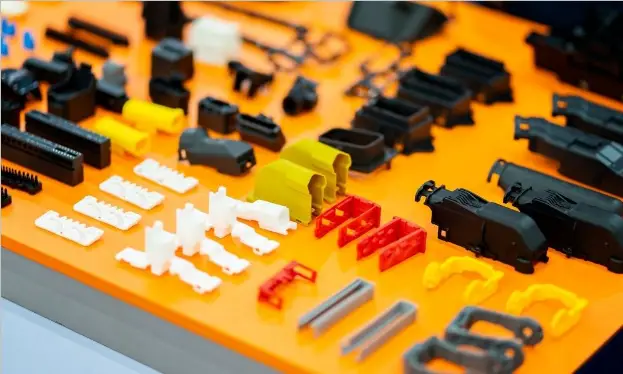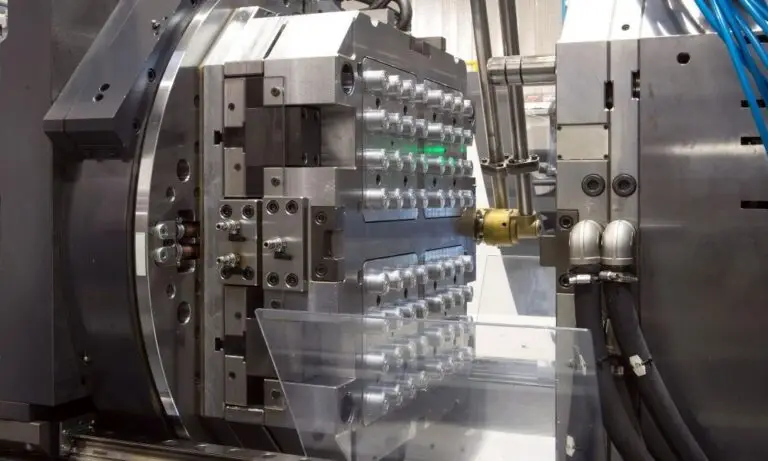RIM Applications
Reaction injection molding (RIM) is an advantageous manufacturing process utilized across a broad spectrum of industries. One such industry that is well-positioned to gain significantly from the capabilities of reaction injection molding is the field of laboratory and scientific equipment design. From production volume to part size, laboratory and scientific equipment align well with the strengths of reaction injection molding. Below, we will highlight some of the primary RIM applications for laboratory and scientific equipment.
PRODUCTION VOLUME
One of the many reasons why reaction injection molding for labs represents an ideal production method for scientific equipment relates to the typical production volume of such equipment. Laboratory and scientific equipment generally have lower annual production volumes. In other words, they aren’t consumer products produced in millions of units each year. Instead, they typically manufacture a few thousand unit per year. Given that reaction injection molding is an ideal manufacturing method for products produced in quantities of 500 to a few thousand, laboratory and scientific equipment production is particularly well-suited to RIM.
PART SIZE
Reaction injection molding is also ideal for manufacturing products that are the intended size of laboratory and scientific equipment. Reaction injection molding for science can create products that are larger than the phone on one’s desk and smaller than a CAT scan machine. As such, laboratory and scientific equipment generally tends to be the right size for RIM molding.
TOOLING COST
Creating the tooling for large complex medical devices is often one of the major cost drivers for molded parts. Fortunately, reaction injection molding offers far lower tooling costs than virtually any other production method used to produce for large parts in low volumes. Rather than using expensive steel tooling like injection molding, reaction injection molding utilizes lower-cost aluminum tooling. RIM can use aluminum tooling rather than steel tooling because the process doesn’t require extremely high temperatures and pressures. As such, the tooling doesn’t need to be as durable to work effectively.
While the price per part may be higher for RIM than other methods, such as injection molding, the substantially lower tooling cost greatly reduces the overall cost of production. To provide a clearer understanding of the tooling costs versus production costs, purchasing a steel tool for a large part can cost up to several hundreds of thousands of dollars. If that tool is only used to produce a relatively small amount of parts, the lower production cost won’t come close to offsetting the steep price of the tool. As such, reaction injection molding for labs is generally the most economical production method for scientific equipment that is large and produced in small quantities.
DESIGN FREEDOM
Design freedom is another critical benefit of using reaction injection molding to design laboratory and scientific equipment. When creating equipment for highly technical applications, it is important to create a product whose exterior appropriately mirrors the sophistication of its internal technological components.
Reaction injection molding helps create visually appealing parts by offering designers an unmatched level of design freedom. Unlike many other part production methods, reaction injection molding allows manufacturers to create parts with varying thicknesses, curves, and encapsulated items. As a result, the parts created with RIM can be designed to have aesthetic appearances that accurately reflect their capabilities.
ENCAPSULATION OF ELECTRONIC COMPONENTS
Unlike other part manufacturing methods, reaction injection molding provides the unique opportunity to encapsulate items into parts. Encapsulation refers to enclosing an item in another material, such as a resin. Given the low temperatures, pressures, and viscosity that is required for RIM part production, encapsulation of even sensitive electronic components is possible without damaging or harming them in the process.
Encapsulating items in laboratory and scientific equipment offers numerous benefits. For example, encapsulating items can help protect them from harsh laboratory environments where chemicals, vibration, or extreme temperatures may be present. In addition, encapsulating items is also highly beneficial for preventing intellectual property theft, a significant risk in the science industry. Because the technology is molded directly into the equipment, it is much less likely to become corrupted or be stolen. This is one of the best reaction injection molding applications because it enhances the power and strength of an existing device, making the process more cost-efficient and accurate.
IMPROVED SANITATION
Laboratories rely heavily on the accuracy of specialized equipment to complete their testing and conduct experiments. If even a minute quantity of a contaminant infiltrates the equipment, the results could become skewed. As such, it’s important for equipment to be cleaned regularly to reduce the presence of dirt, dust, and other pollutants as much as possible.
Reaction injection molded equipment is far easier to clean than equipment produced by many other processes because it allows manufacturers to consolidate parts and simplify the design. Rather than fusing numerous parts together, RIM allows equipment to be carefully designed to maintain structural integrity while reducing superfluous parts. As a result, RIM parts have fewer parting lines where dirt and other contaminants can get trapped or infiltrate the machinery. The absence of these crevasses makes RIM equipment inherently more sanitary, as well as easier to clean.
EXCEPTIONAL DURABILITY
Laboratory and scientific equipment are one of the largest expenses that most labs incur. Therefore, it is important to create equipment that is durable enough to last for many years without breaking down despite potential exposure to harsh elements. This RIM application allows manufacturers to build equipment that satisfies this need for longevity.
Reaction injection molded parts are highly durable and are created with coatings that make them highly chemically resistant. In addition, RIM parts are also wear-resistant and dimensionally stable so that they can undergo substantial use without breaking down and causing costly downtime or the need to purchase expensive replacements.
Rimnetics is a leading reaction injection molding company for encapsulation, overmolding, enclosures, structural foam molding, and cosmetic housings. Over the past three decades, we have provided molded solutions® for a wide variety of industries including laboratory equipment, medical device, electronic, construction, and IT industry.
With a focus on versatility, RIM applications are diverse, from laboratory equipment to specialized medical devices. These uses embody strength and precision. Partnering with us ensures that your projects benefit from expert guidance, innovative solutions, and a commitment to exceeding industry standards for quality and performance. To learn more about our reaction injection molding services, contact us today.







